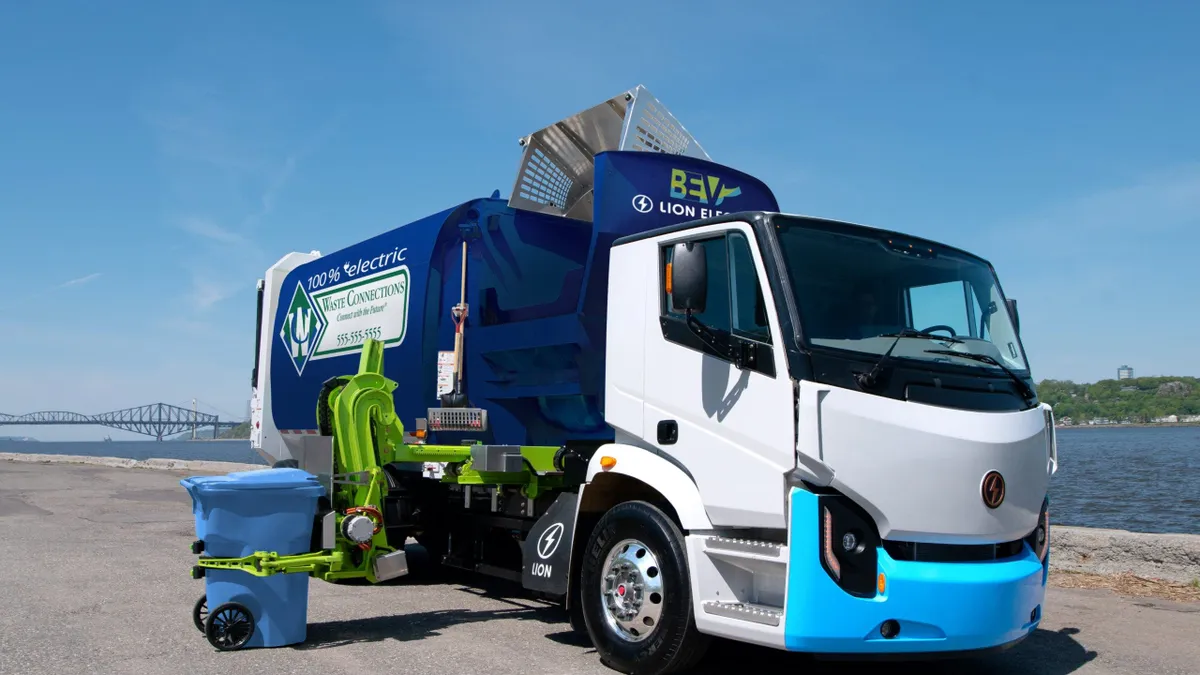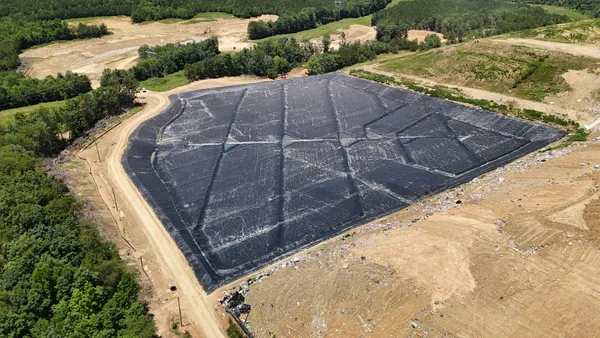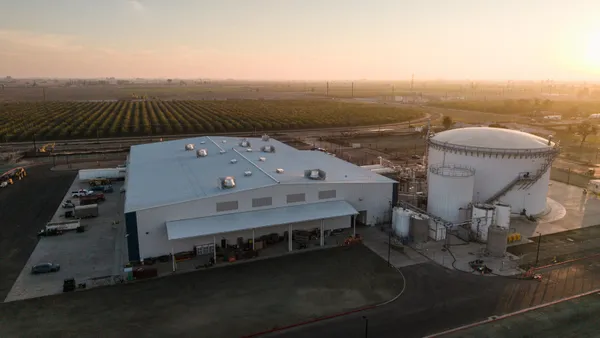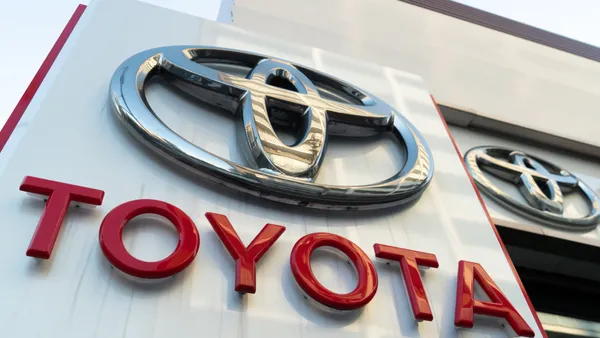Waste Connections had added new targets to its environmental, social and governance strategy and reported a reduction in emissions despite ongoing growth through acquisitions, according to its 2022 sustainability report.
The company set multiple ranges of targets in its 2020 ESG report as part of a $500 million commitment to related capital spending. The latest report also contains new details on environmental justice factors and expanded diversity metrics as well as updated considerations related to recommendations from the Task Force on Climate-related Financial Disclosures.
New goal: Decrease Scope 1 and 2 GHG emissions 15% by 2033
Update: Waste Connections reported a 7% decrease in emissions from 2019 through 2021
The addition of an absolute greenhouse gas emissions reduction target is new for the company. For 2021, Waste Connections reported Scope 1 emissions of 5.6 million metric tons of CO2 equivalent (down from 6 million in 2019) as well as 50,694 million metric tons in Scope 2 emissions.
Like the emissions of its peers, the majority of Waste Connections’ Scope 1 emissions come from landfills. The company notes upcoming investments in two renewable natural gas projects at its landfills. The company’s plans to expand recycling and related services and invest in alternative fuel vehicles are among its other emissions-reduction strategies, as ways to decrease emissions. Waste Connections’ proportion of alternative fuel vehicles declined slightly in 2021, to 11.9%, but it notes continuing work to pursue electric collection vehicles.
In addition, the company points to a “net climate benefit ratio” that indicates its operations offset 3.4 metrics tons of carbon for every metric ton generated by managing customers’ waste materials.
New goal: Achieve continuous improvement in Scope 1 and 2 emissions intensity
Update: It reports an 18% reduction in Scope 1 and 2 emissions intensity since 2019
Emissions intensity, a common figure in ESG reporting, is calculated based on a company’s scale. According to Waste Connections, it generated 919 metric tons of CO2 equivalent per $1 million of revenue in 2021.
Other goal updates
Waste Connections reiterated targets it had set for a 15-year time frame, using 2018 as its baseline year.
- Goal: Increase “resources recovered” by at least 50%. Waste Connections reported recycling 1.84 million tons of material in 2021, with a goal of 2.31 million tons. The company cites ongoing investment in new MRFs and robotics as part of its plan.
- Goal: Increase biogas recovery by at least 40%. The company recovered 29.2 billion cubic feet of biogas in 2021, with a goal of 36.7 billion cubic feet.
- Goal: Process at least 50% of landfill leachate on site. This level declined slightly, to 37.1%, in 2021, but the company reports it has “substantially completed construction” of two new facilities.
- Goal: 25% reduction in safety incident rate. Waste Connections reported 15.15 incidents per 200,000 hours worked in 2021, down slightly from 2020, and it is aiming for a rate of 12.78 or less. The company’s total recordable incident rate increased in 2021.
- Goal: Continuous improvement in voluntary turnover. The company saw its turnover rate jump to 21.1% in 2021, from 14.6% in 2020 and 17.8% in 2019.
- Goal: Continuous improvement in servant leadership scores. The company reported a score of 4.24 in 2021 (on a 1-5 scale) based on employee feedback. This score, which relates to the company’s management culture, has risen continually since 2018.














